My Scottish Wild Garden - Welcome
by Linda Latham
Estimated reading time 16 mins
I am the grateful and proud custodian of my wild garden in South Lanarkshire, consisting of 12 acres which is now 20 years old, a youngster really! 700 feet high and bordered by woodland and a railway line. It has everything a wild natural haven may need.
Large areas of fresh water filled with trout and various amphibians. Resident Moor Hens, visiting Swans, Ducks, Dab chicks, Herons, Kingfishers and the occasional Otter, Oyster catcher and Cormorant. A burn that feeds the two lochans and flows from the surrounding hills and eventually into the river Clyde. Aquatic and marginal plants and boggy areas for dragonflies and damsel flies.
Surrounded by a diverse selection of native meadow plants that are never grazed or cut. Bordered with woodland and wild raspberries in dense clumps, providing essential cover for nesting birds. The untouched meadow areas are hunting grounds for Barn owls, Harriers, Buzzards, Kestrels, and other birds of prey looking for field voles and flutters with moths and butterflies in Summer.
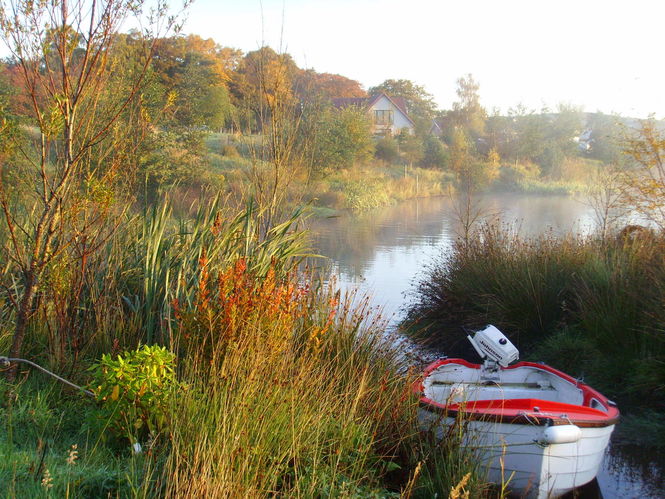
Surrounding the house in approx. a quarter of an acre is a more manicured garden with some traditional plants seen in a Scottish garden, bordered with native hedgerows now mature and 5 feet high, providing 5-star accommodation for the many resident and visiting birds I welcome and feed daily.
Over 80 species of birds have been counted in a year here. After planting 800 trees and hedgerow plants, those 20 years ago, 600ish survived many challenges, wind, weather, and rabbits. After the first 4 years this wild garden began to take hold and evolve. It all takes time. And in the following monthly blogs I hope to share my learned experience in creating a wild garden with you, in the hope I can inspire some of you, in whatever space you have, to make room for wildness.
How we created our wild garden
Before planting began the boggy and small pond areas, referred to as lochans now, were enlarged and the burn redirected to flow in and out providing a constant fresh water source. This required diggers and manpower! I did learn to drive one, but it needed skill.
We built bridges and jetties for access, brought in tonnes of large local stone and filled gabion baskets to stabilise the banks of the new waterfall. Many hours were spent creating a run up the waterfall for migrating trout from the river. Yes, this does now sound like a huge job but we managed it ourselves with a neighbour who helped as a digger driver.
We also incorporated a system of pipes in case of drought conditions where the lake level might drop too low to flow back into the river. This happened only once in 20 years for a week. After all, this is Scotland!
Another benefit was that the lake acts as a water calming pool when winter storms cause the burn to burst into a torrent. Avoiding flooding further down. Maintenance of the lake is time consuming, especially in summer, in order to control the growth of weed that can choke up the flow and damage the fish and other aquatic life, this is done without chemicals…by hand.
Into November - autumn tasks in our wildlife garden
As the canopy of autumn leaves floats down on the garden in late October, I gather some of the crispy piles together before the rain sticks them to the gravel paths like glue.
One reason, for hedgehog bedding. I have over the years added to my hedgehog residencies, tucked under hedgerows and in secret corners where I have observed their well-worn tracks. Usually followed by their poo. I start feeding them around this time before their hibernation.
Secondly, because the leaves make reasonable compost, and its free. Bagged up for the following year.
Thirdly, to cover bare soil through winter. I have found this suppresses weeds and provides a blanket for the tiny creatures and larvae etc. I see blackbirds turning them over, looking for insects and larvae to supplement their diet.
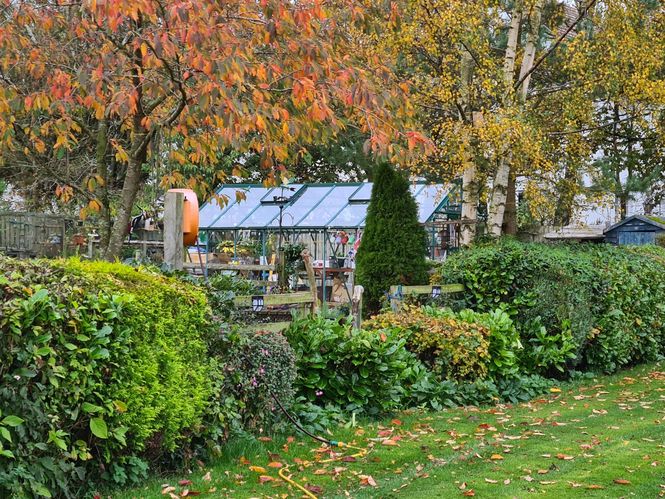
This blanket under hedgerows etc encourages microscopic growth too, enable the material to break down into the soil. This needs to be left for several months throughout the late autumn and winter.
My less wild garden around the house is bordered with over 30-foot beeches, sycamores, ash, cherry, and laburnum. A lot of leaf litter. So, a thick blanket protects early shooting snowdrops, daffodils, and crocus. And especially hellebores, my favourite flower.
The many worms also appreciate it when I mow the grass and crunch up any remaining leaves making it easier for them to be dragged down into the earth. I do have a lot more worms than I used to, mainly because they are allowed to feed and multiply undisturbed.
November
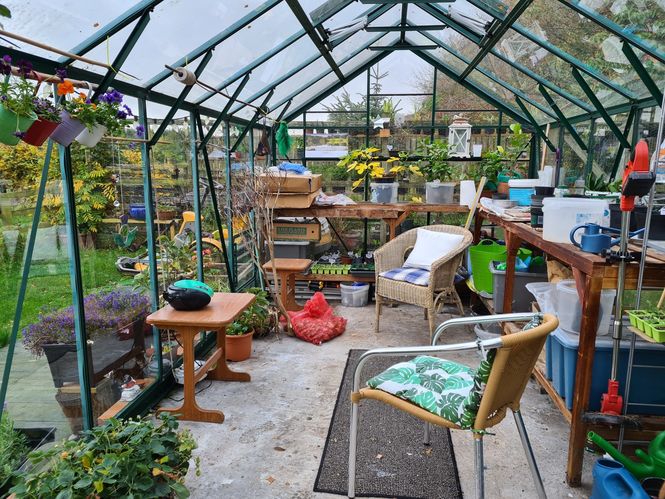
A month that takes me often indoors – but outdoors. My greenhouse is not only my sanctuary but a purposeful place near the edge of the wild garden. Its location was carefully planned to optimise the early and afternoon sunlight. Facing south easterly if a glass box can face anywhere! It also has a wicker chair and a radio…we all need a break!
Free plants
In my experience this is one of the most productive times for me to start propagating any seeds from wildflowers especially cornflower seeds that grow very quickly and will stay as plug plants until next spring. Spring also is great for propagating of course, but I have experienced success in autumn too.
I am presently taking hardwood cutting from my hardy fuchsias, which will be planted in groups around the lake area next spring to attract pollinating insects during late summer and autumn, when most wildflowers have gone to seed. I’m hoping to increase the Buddleia population too as the butterflies were concentrated on the ones in the more formal garden this year, after a noticeable absence the year before. It can be a challenge to incorporate these plants successfully into the wilder areas, where they compete with many naturalised wild plants. However, I will attempt to do so. The wildflower plugs will overwinter in the greenhouse.
How I make my own propagation compost
Gritty compost for this propagation is my own concoction of topsoil or compost, sifted through a wire sieve, the sandy grit brought down by the rainstorms into the river and pond and the dried pond weed gathered in July left to decompose. Like making a cake…another skill that has passed me by….The ingredients get mixed together to form a light fine compost ideal, I have found, for young roots to establish. All recycled from around the location. Fairly low in nutrients as they do not require too much nutrition yet.
I do not profess to be any expert in horticulture, or anything really, but hope to share my experiences here, which may help others in similar ambitions. I have learned that there are no guarantees, as nature has the final say – not me.
Planning ahead - planting spring bulbs
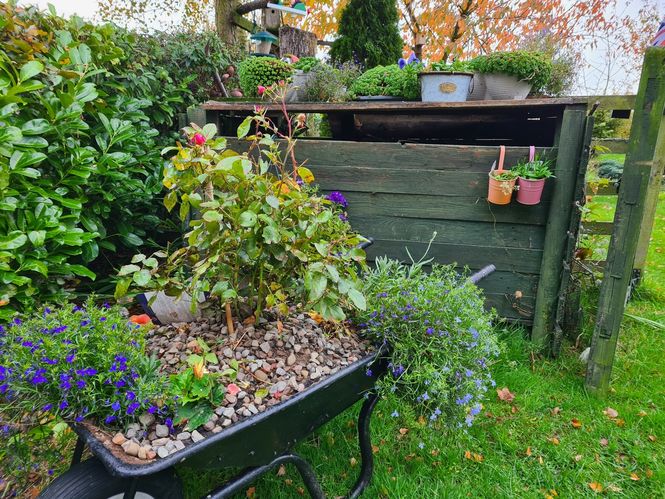
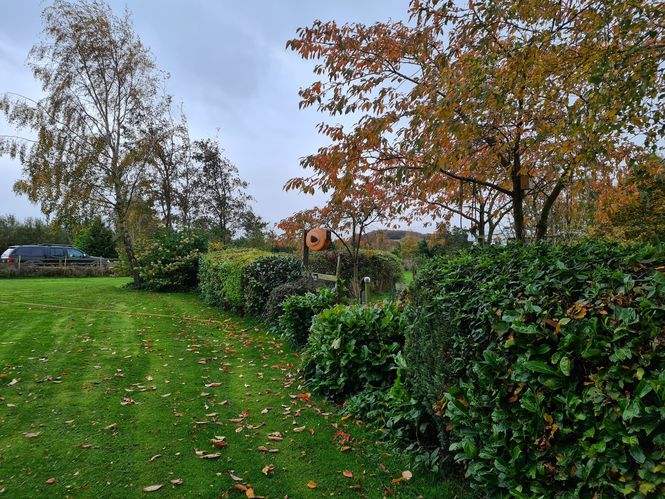
This week I bought 5 varieties of daffodils in bulk, 25 kilos. These I will add to the collection I planted some years ago. Taking a sharp spade, I dig a rough trench along the lake path and various other grassy locations, throw in the bulbs roughly and then cover. Daffodils are hardy plants which is needed where I am, and always surprise, delight, and cheer up the place after the dullness of winter from February to April. There are many other early flowering marginal and meadow plants now established too. The Flag Iris in purple and yellow are liked by the water voles as they eat the young shoots. Red campion, daisies, English bluebells, foxgloves, meadowsweet, clover, buttercups, ragged-Robin, marsh-marigolds, water mint, water crowfoot...to name a few.
My compost heap is a shelter for birds and hedgehogs
My collected soft green plant material is already bedding down in the compost heap. A homemade design consisting of recycled wooden fencing and there are so many ways you can do this. A friendly farmer offered me a sheep’s fleece which will cover the compost heap over the winter. My robins and wrens seem to enjoy the quiet of the compost heap, sheltered from the elements through the gaps I always leave for them. Remembering the hedgehog too who has a ground level entry space for the winter.
Best time for moving young trees
Moving plants and small trees I do at this time of year if required. In my experience this can be a challenge for the plant. If you can avoid disturbing the root system, which may be bigger than you imagine, the better. Although the plant may be dormant, the roots are still doing their important job. For new bare root saplings, I have found that growing them on in large pots, protected from the elements allows plenty of time to establish that vital ecosystem of roots, and mycelia. A good start in life is always helpful.
Naturalness - providing spaces for wildlife
It may now be quite evident that my first priority in creating a wild garden is always the wildlife. Their needs in order to thrive, shelter, food, water and space. However, their ability to find these safe spaces are not increasing and they do not have resources to change this. So, my ‘mission’ is and always has been, to provide spaces for wildlife. It begins with the microscopic fungi in the earth, the basis for heathy growth. By giving nature the time to look after that process of recycling, a balance and symbiosis occurs. This is not a scientific observation as I am not a scientist, however it brings a tangible sense of naturalness.
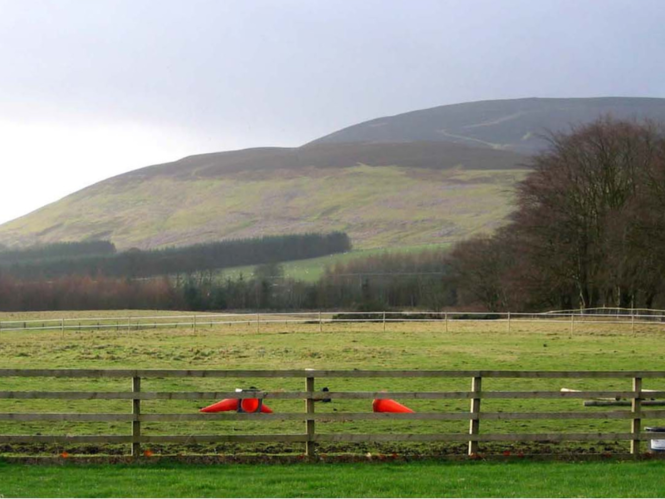
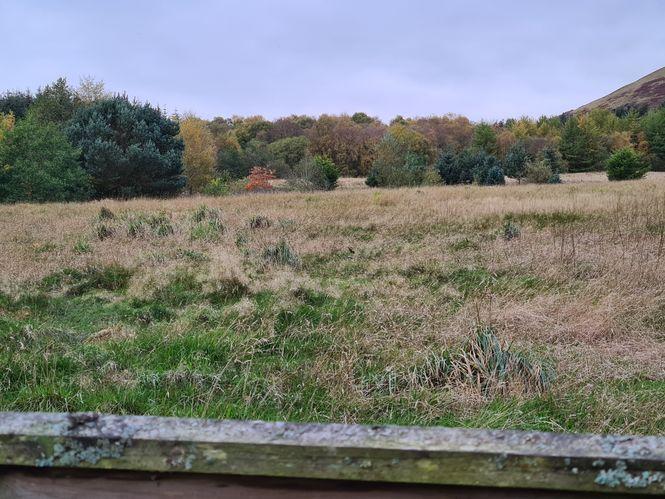
Management of a wildlife garden
So why does it need management? A tough question to answer. I would say rather than management, the creation of a wild space needs encouragement, patience and understanding. We, as humans, have some measure of control, but ultimately, we can only coax and help shape the end result. And then stand back and marvel at the transformation from bare, lifelessness to wildness and nature in all its majesty.
As November wains I find myself surrounded by seeded trays, sticks of hopeful cuttings and lots of plans taking shape for the new year. In contrast, the sleepy hedgehog, with his belly full of slugs, worms and hedgehog food left out over the last few days of feasting before hibernation, is winding down for the winter snooze in his cosy 5 star accommodation.
November for me is about remembrance too. Not forgetting the resident birds and visiting migrants looking for a steady supply of mixed food for the winter, where insects are fewer. I make sure they are catered for daily and I have found that they always return to my wild garden now. The fruiting hedgerows, trees, and purpose built hides give them security and protection from predators and the winter temperatures. For me, birds bring life and song into the garden and surroundings. Over 80 species of wild birds, and water foul have been counted throughout a year here and I can only assume they are voting with their feet in staying around. I am very grateful for their presence.
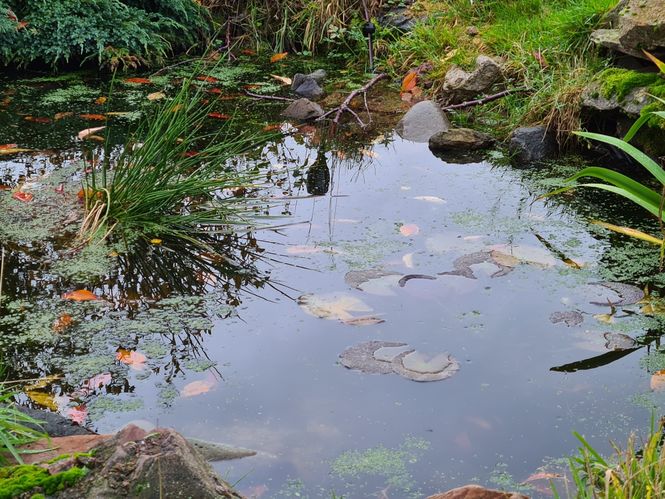
Next time
Otters and stoats are often seen around the water and I am lucky to have water voles too, a fairly rare species at present. Kingfishers also visit when the smaller fish wake up in spring. They love to perch looking over the shallows, so I placed a large willow branch into the lake and and it grows up every year providing those vital perches. I also bend smaller saplings that self-seed in the riverbank over the river and they too make perfect viewing points for the kingfishers.
It is my hope that in sharing some of my experiences of my wild garden in the coming year, some of you will be inspired to experiment and bring wild nature back into the garden.
December into January, depending on the weather, is usually about potential damage control. Staking young trees, checking on cuttings etc, getting access to bird boxes and cleaning out feeders etc. Also remembering the hedgehog who might come out of hibernation if the weather is mild to seek some food or water.
Thank you for caring! Until next time…
About the author
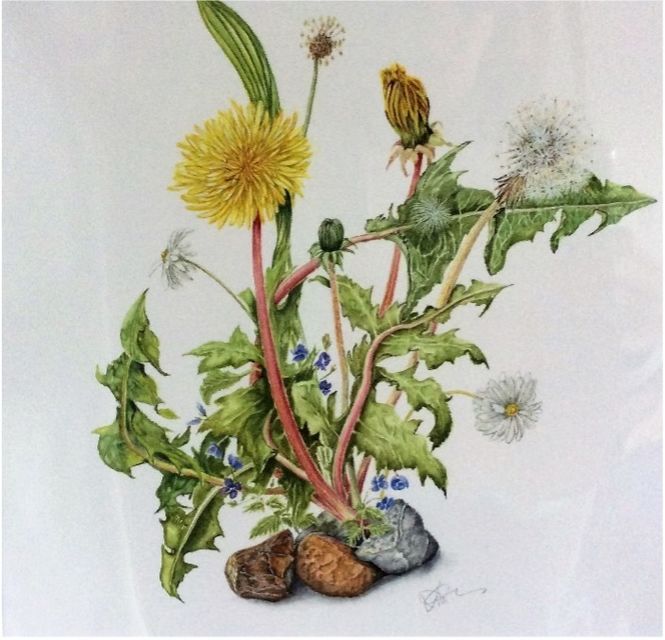
Linda Latham
I am 70 years old, was 51 when I started this journey into the wild garden. On the whole I manage the 12 acres myself, with my partner driving tractors or other machinery now and again. It is a joy. Am I retired? Retired from paid work, yes. When time allows, I am a wild life and botanical artist.


 Find a Garden
Find a Garden

 What's New
What's New

 Our Impact
Our Impact

 Join
Join


